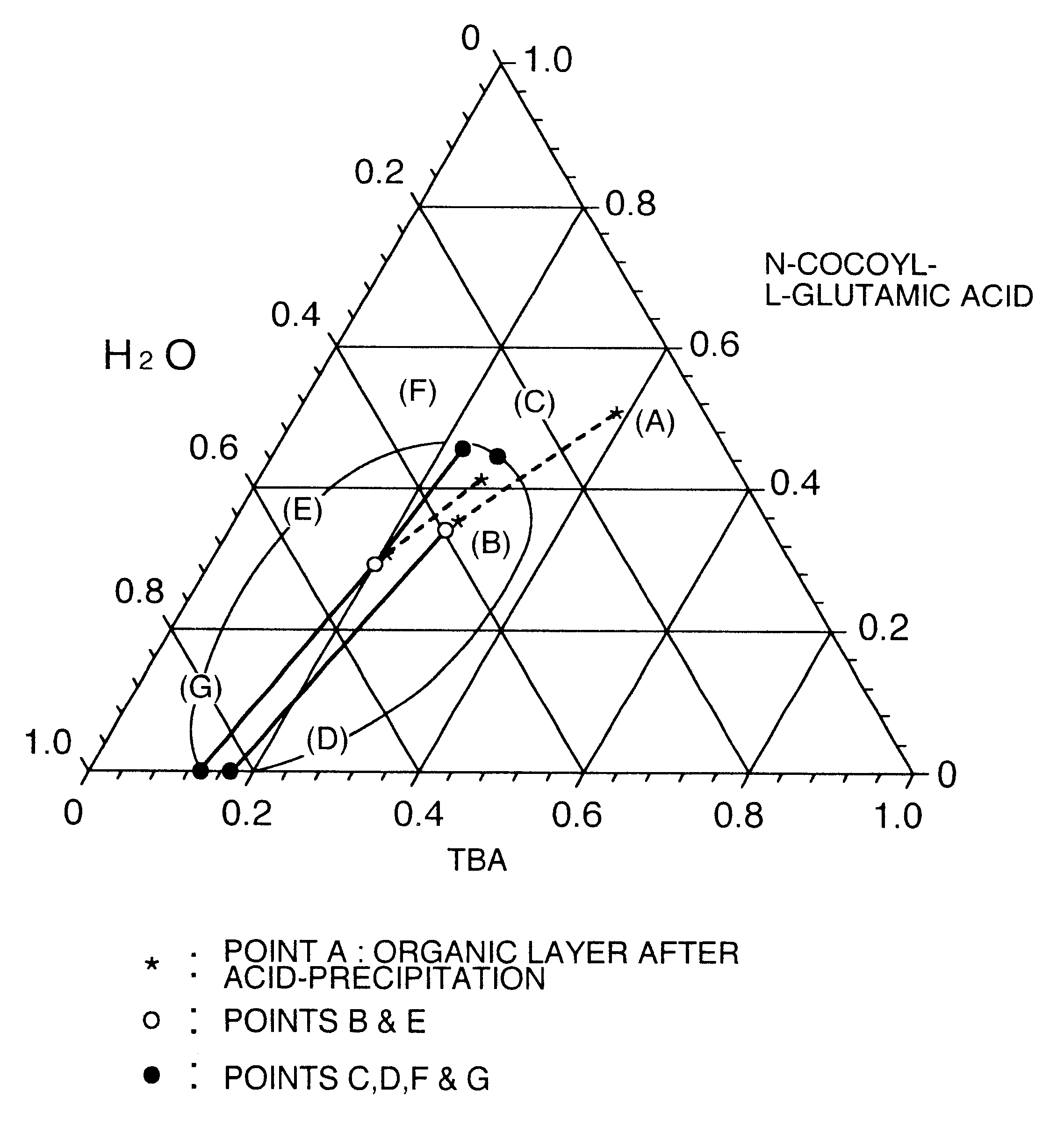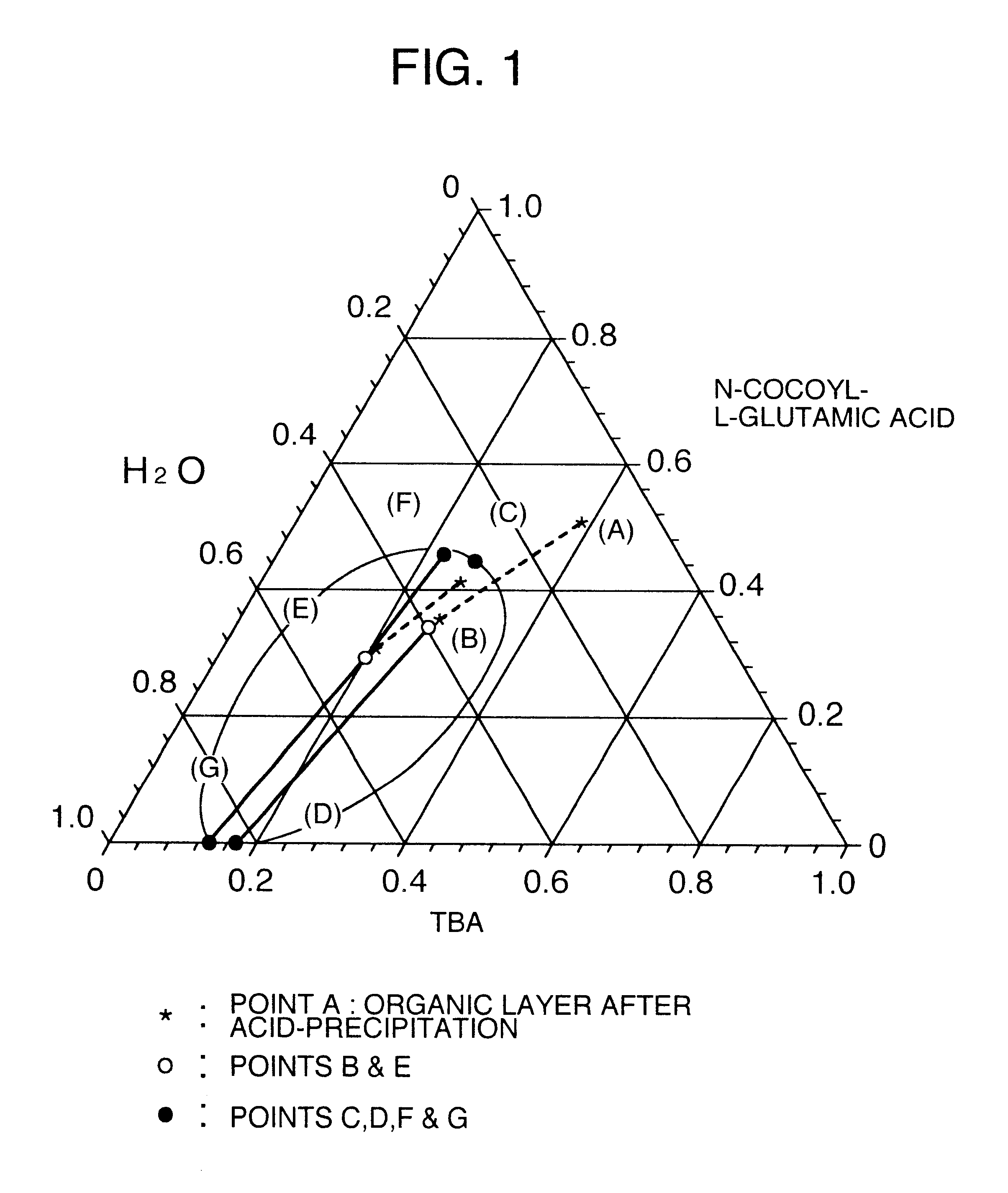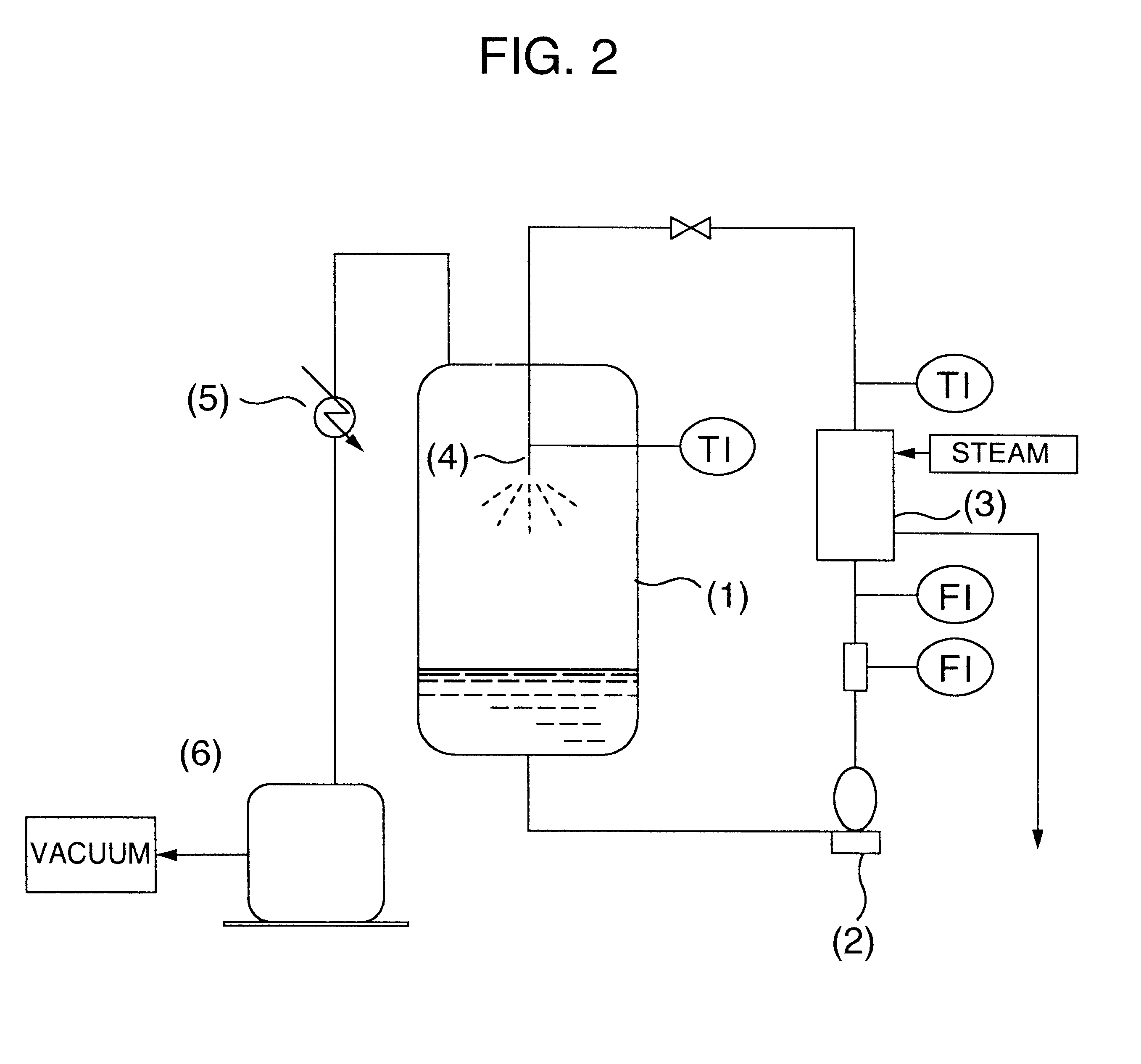Process for producing long chain N-acyl acidic amino acid
a technology of which is applied in the separation/purification of carboxylic acid amides, hair cosmetics, applications, etc., can solve the problem that the obtained long chain acyl acidic amino acid is insufficient in the removal of inorganic salts, and achieves superior stability
- Summary
- Abstract
- Description
- Claims
- Application Information
AI Technical Summary
Benefits of technology
Problems solved by technology
Method used
Image
Examples
reference examples 8 and 9
The data of Table 1 was taken in a manner similar to that of Reference Examples 1 to 7, as an example to show a separation region in the mixed system of long chain N-acyl acidic amino acid / tertiary butanol / water in the washing step. Data of respective compositions relating to an organic layer and an aqueous layer separated from the system of N-cocoyl-L-glutamic acid / tertiary butanol / water are shown. The temperature was 65.degree. C.
example 1
Acylation Step
To a mixed solution of 1,444 g (7.72 mol) of monosodium L-glutamate monohydrate, 3,070 g of pure water and 1,235 g of 25% by weight sodium hydroxide aqueous solution (sodium hydroxide 7.72 mol), 1647 ml of 88% by volume tertiary butanol aqueous solution was added, and 1,760 g (7.56 mol, free fatty acid content 2% by weight) of cocoyl chloride was dropwise added under a stirring power of 0.5 kW / m.sup.3 over 2.5 hours, while cooling the resulting solution and adjusting to pH 12 with use of 25% by weight sodium hydroxide.
Acid-precipitation Separation Step
Stirring was further continued for 30 minutes, and thereafter the pH of the liquid was adjusted to 2 by dropwise adding 75% sulfuric acid, and the temperature was kept at 65.degree. C. After completion of the dropwise addition, stirring was finished, and the liquid was allowed to stand at 65.degree. C. for 20 minutes, thereby separating into an organic layer and an aqueous layer. The organic layer was obtained. A composit...
example 2
Example 1 was repeated, except that the temperature and standing time in the acid-precipitation step were changed to 50.degree. C. and 25 minutes, respectively, and the temperature and standing time in the washing step were changed to 50.degree. C. and 30 minutes, respectively. After the separation, an organic layer was obtained through a further separation.
Further, after adding potassium hydroxide to the organic layer obtained through a further separation so as to convert 75% of the carboxyl group of the N-cocoyl-L-glutamic acid in the organic layer to its salt, and further adding pure water thereto so as to make a solid content 30% by weight, the resulting liquid was mixed by stirring. Thereafter, the solvent distillation removal step was conducted under conditions shown in Table 2.
Twelve hours after starting the distillation, the liquid temperature reached 52.degree. C., and then the distillation was finished to obtain an aqueous solution of potassium N-cocoyl-L-glutamate.
The res...
PUM
| Property | Measurement | Unit |
|---|---|---|
| Temperature | aaaaa | aaaaa |
| Percent by mass | aaaaa | aaaaa |
| Percent by mass | aaaaa | aaaaa |
Abstract
Description
Claims
Application Information
 Login to View More
Login to View More - R&D
- Intellectual Property
- Life Sciences
- Materials
- Tech Scout
- Unparalleled Data Quality
- Higher Quality Content
- 60% Fewer Hallucinations
Browse by: Latest US Patents, China's latest patents, Technical Efficacy Thesaurus, Application Domain, Technology Topic, Popular Technical Reports.
© 2025 PatSnap. All rights reserved.Legal|Privacy policy|Modern Slavery Act Transparency Statement|Sitemap|About US| Contact US: help@patsnap.com



